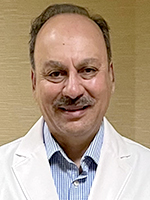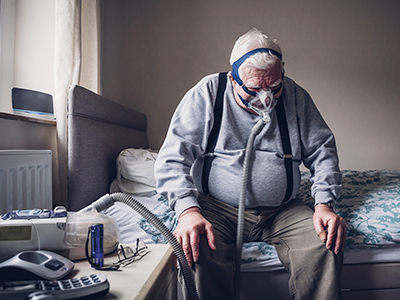
Researchers find obstructive sleep apnea is underdiagnosed among patients with non-valvular atrial fibrillation, highlighting the need for increased screening.
While the noise of someone snoring loudly is hard to ignore if you’re sleeping next to it every night, the stress that it puts on the heart can be easy to miss. Chronic snoring is often associated with a sleep disorder called obstructive sleep apnea (OSA), which occurs when the muscles of the throat relax during sleep and close off the airway. This cuts off the air supply to the lungs and can trigger highly disruptive gasps for air and low oxygen levels. OSA can cause a myriad of health problems and recent research suggests it could be a possible cause of non-valvular atrial fibrillation (AF), a common heart condition that is displayed as an irregular heart rhythm. Because of this, notes Vancouver Coastal Health Research Institute scientist Dr. Iqbal Ahmed, accurate screening for OSA among AF patients is critical.
“On their own, OSA and AF can cause serious health complications and increase the risk of mortality,” says Ahmed, a respirologist with Vancouver Coastal Health and head of the Department of Medicine at Richmond Hospital. “However, the condition of OSA among AF patients does occur and some research has shown its prevalence as high as 85 per cent. And yet, there exists a gap in official OSA diagnoses among this population.”

While AF can exist without any symptoms, people with the condition may experience discomfort or fluttering in their chest, heart palpitations, unexplained fatigue, light-headedness or shortness of breath. Medication is most often used to help manage AF. In more serious cases, cardioversion, in which an electric current is sent to the heart, is necessary to restore the heart’s normal rhythm.
“Treating moderate or severe OSA can improve health outcomes and quality of life for AF patients. However, this first requires accurate screening and diagnosis of OSA among this specific population, keeping in mind that they may not experience classic sleep apnea symptoms of tiredness, obesity or loud snoring.”
“Unfortunately, you can’t send every patient for an overnight sleep study in a lab, which is the most accurate way to diagnose OSA,” adds Ahmed. “It would be phenomenal to have a user-friendly way of picking up sleep apnea in an AF clinic, or to at least identify those who do not have OSA.”
Improving screening for OSA requires more effective assessments and greater collaboration
In a study recently published in CJC Open, Ahmed and his colleagues looked at whether standard OSA screening tests that do not require an overnight sleep lab stay can effectively detect the condition among AF patients. The researchers employed acoustic pharyngometry (AP), which measures the narrowness of the throat, the NoSAS (Neck, Obesity, Snoring, Age, Sex) questionnaire, and the STOP-BANG (Snoring, Tiredness, Observed apnea, blood Pressure, Body mass index, Age, Neck circumference and Gender) questionnaire, to identify moderate to severe OSA sufferers among an AF population. They also administered the Home Sleep Apnea Test (HSAT), which is an OSA diagnostic test reasonably comparable to in-lab testing, to the same population and compared results across assessments.
The researchers’ findings determined that although AP, NoSAS, and STOP-BANG are user-friendly OSA assessments, they were not as effective at detecting OSA among AF patients as the HSAT.
“The lack of efficacy of some of those tests could be due to them being weighted toward tiredness and loud snoring, which AF patients may not be experiencing,” explains Ahmed.

“We concluded that until we find a better way of picking up high risk OSA patients in AF clinics, they should all be considered for HSAT testing,” explains Ahmed.
For patients who have been diagnosed with both OSA and AF, studies have shown that treating OSA—through use of a continuous positive airway pressure machine—can help to reduce AF symptoms and progression. “This tells us that dedicated OSA screening is of value.”
“Ideally, there would be closer collaboration between sleep doctors and cardiologists so that as patients are seen for follow-up, they can then also be seen for OSA management,” says Ahmed. “With cardiology increasingly looking to lifestyle measures for improving heart conditions, I anticipate that proper management of sleep apnea will be used more often in the future to help treat AF.”


